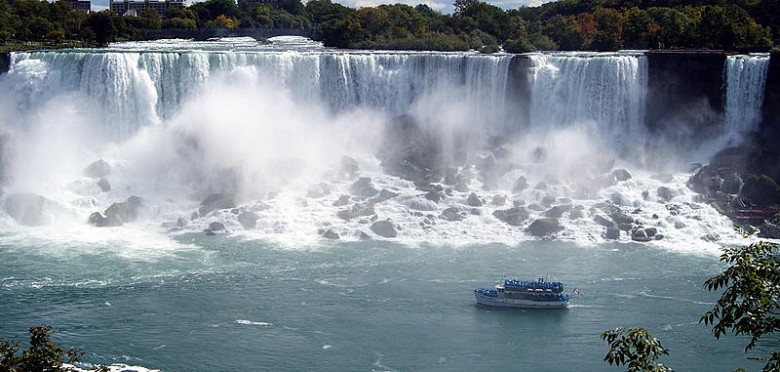Jim Robbins grew up in Niagara Falls. Now he reports for the Wall Street Journal. The result is a loving look at the $40 million makeover that is taking place at the seventh natural wonder of the world in Buffalo's backyard. And in concert with the Buffalo Billion.
Niagara Falls: America’s Must-See Natural Wonder Is Getting a $40 Million Makeover by Jim Robbins in the Wall Street Journal on June 1, 2016 is tag-lined: "Once a honeymoon mecca, then a kitschy playground, the Falls may be on the precipice of a major comeback."
But it's not just any comeback, it's one that takes its cues from "the New Urbanism playbook—a design philosophy that emphasizes access to nature and history in a pedestrian-friendly way."
So, rather than replicating the glitz and commercialization clearly visible across the river in Niagara Falls, Ontario, long the envy of Niagara Falls, NY residents who have longed for all those tourist dollars, it's being done properly. Quite a feat for a community not known for making wise development decisions.
The initial mis-step was to consciously forego a tourism economy in favor of an industrial future. It must have seemed wise as industry burgeoned in the 1950s and '60s, "real work" rather than just service jobs. This despite the Honeymoon Capital of the World renown that the Falls already enjoyed. And that was Niagara Falls, NY, by the way, not Ontario. Toronto was still a cow town and Niagara Falls, Ontario was small and sleepy.
Before environmental concerns gave rise to regulations and protections, the Love Canal catastrophe occured, only the highest profile case of envirnmental disaster of epic proportions. The Golden Goose's nest was indelibly defiled.
Robbins recounts some of this history, but waxes poetic on the comeback, which harks back to a critical and little known piece of Niagara Falls history. "A Free Niagara Movement sprang up in the 1870s, helmed by Frederick Law Olmsted, of Central Park fame, who lobbied for removal of ramshackle industrial buildings to create what is now called Niagara Falls State Park. Olmsted believed deeply, almost religiously, in very little development and lots of nature 'where the masses could be renewed,' and so industry structures gave way to dirt footpaths that wind through forest along the rushing water."
The article follows Robbins' meandering journey along these recently restored footpaths, documenting many of the improvements that are finally funded. Many are enhancing enjoyment of the wonder of the rapids and the cataracts, while others bolster the city of Niagara Falls. All are welcome.
Read the article - many others will across the nation and around the world -- and then go take a look. No need to for guests to visit, it's a quick 20 minute drive from Buffalo and there are now three trains a day connecting these sister cities. Take the new, free step-on/step-off trolley that runs from Niagara Falls to Old Fort Niagara and back while you're there. You will be amazed.

